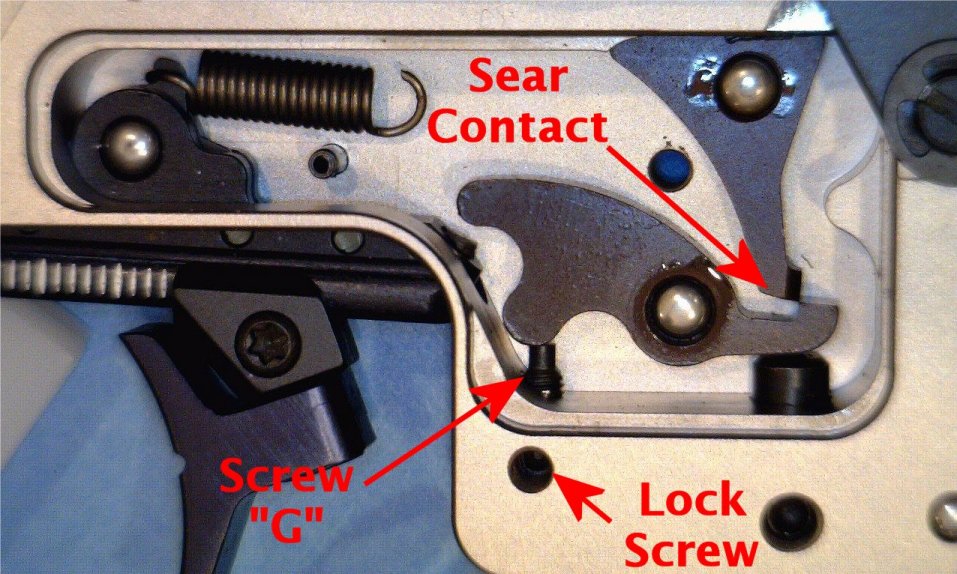The sear is basically the 'catch' in a trigger mechanism that (when activated) releases the "hammer," or in the case of most air pistols, a spring loaded plunger that opens the firing valve.
Here's a picture I had handy that shows the inner workings of a Benelli Kite:

The sear bar is the funny arched bit. It has a hook (the actual "sear") on the right end that holds the release lever (the vertical piece) for the firing plunger. The sear bar rotates around the rounded silver pin in the middle. When the trigger is pulled, a screw on the back end of the trigger rotates upward, and presses up on the left end of the sear bar. The sear bar rotates clockwise, unhooking the release lever. The amount of overlap between the sear hook and the release lever sets the "sear engagement". The Kite is designed (like most air pistols) to have a "breaking" trigger, with (as you can see) a really small amount of overlap, so only a tiny movement fires the shot once the trigger makes contact with the sear bar. However, for safety, SOME overlap is required so the pistol won't fire when bumped, or even from the jar of closing the action.
The reason I have this picture is that over time, the sear surfaces wear, and this particular pistol would occasionally fire when the action was closed. A tiny adjustment on Screw G increased the sear engagement so that it was once again reliable & safe, but still had a crisp break to the trigger.
To get a rolling trigger release, you (in theory) can increase the sear engagement so there is a significant amount of overlap that has to be overcome before the pistol fires. To make this smooth, both the sear and the release lever surfaces must be carefully polished and lubricated so they slide without any perceptible hiccups or roughness. The mating angles also have to be just right. It's hard to get this to work well, because the difference between the static friction between the parts at rest, and the sliding friction once they start moving, has to be kept small. Otherwise as soon as the the sear starts moving, it is easy for it to slide abruptly all the way past the firing point. Another advantage of the rolling release trigger is that it is inherently much safer, due to the large sear overlap involved.
The sort of sear geometry required for a rolling trigger release is done all the time in many .22's, but I've never encountered an air pistol that is set up that way. It may be that the lower forces involved in an air pistol trigger make it especially tricky to get that to work just right. With an electronic trigger, in theory, you should be able to design it to operate with a rolling release more easily. I have a Morini 162EI, which is normally set up for a breaking trigger. I've seen posts that there are adjustments & possibly spring changes that can make it into a bit more of a rolling trigger, but my recollection is that the amount of "roll" you can get is somewhat limited.
